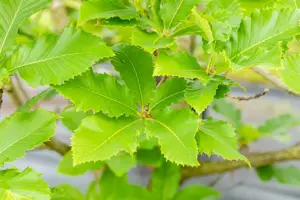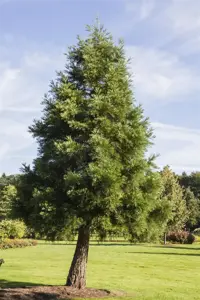Syringa vulgaris - 3 Ltr pot
Syringa vulgaris - 3 Ltr pot
Description
Brown fruits emerge from these. They exude a strong fragrance.
Bulletpoints
* suitable for flowering hedges
* the flowers are highly favoured by bees, bumblebees and hoverflies
* cut flower
* strongly scented flowers
* attractive yellow autumn colouring
* tolerates pruning
* easy to care for
* heat-tolerant, resistant to urban climates, wind-resistant, smoke-hardy, heat-loving, cannot be planted over, deer-resistant, stem protection recommended
Leaves
Attractive yellow autumn colouring.
Bark
Grey-brown, striped, torn bark makes this plant an eye-catcher in any garden.
Growth habit
Upright, dense, branched.
Water
The plant has a medium water requirement.
Pruning
Pruning, ideally in July, is advisable for this plant.
Location
Preferred location in a sunny to semi-shady position.
Soil
Normal soil.
Planting time
Container plants can be planted all year round, except when the soil is frozen and in summer heat (over 30°C).
Tasks
- Fertilise: In the period from March to April
- Watering: In the period from May to September
- Pruning: July.
Care
- A slow-release fertiliser can be used in spring. This releases the nutrients slowly and continuously so that the plant is evenly supplied over a longer period of time.
- Lilacs flower on biennial wood, so the plant should be thinned out after flowering or plants that have grown too large should be pruned.
Flower
The lilac-coloured flowers appear in panicles from May to June. They grow to around 12 - 15 cm tall and are strongly scented.
Use
Pruning, solitary, park, bee pasture, hedge, scented garden
Root
Syringa vulgaris is a taproot and, depending on the soil, forms runner-forming, strongly spreading roots.
- Article number801
-
EAN codeSYVULGAR-2C3
- Latin nameSyringa vulgaris
- catalogLandscape shop



